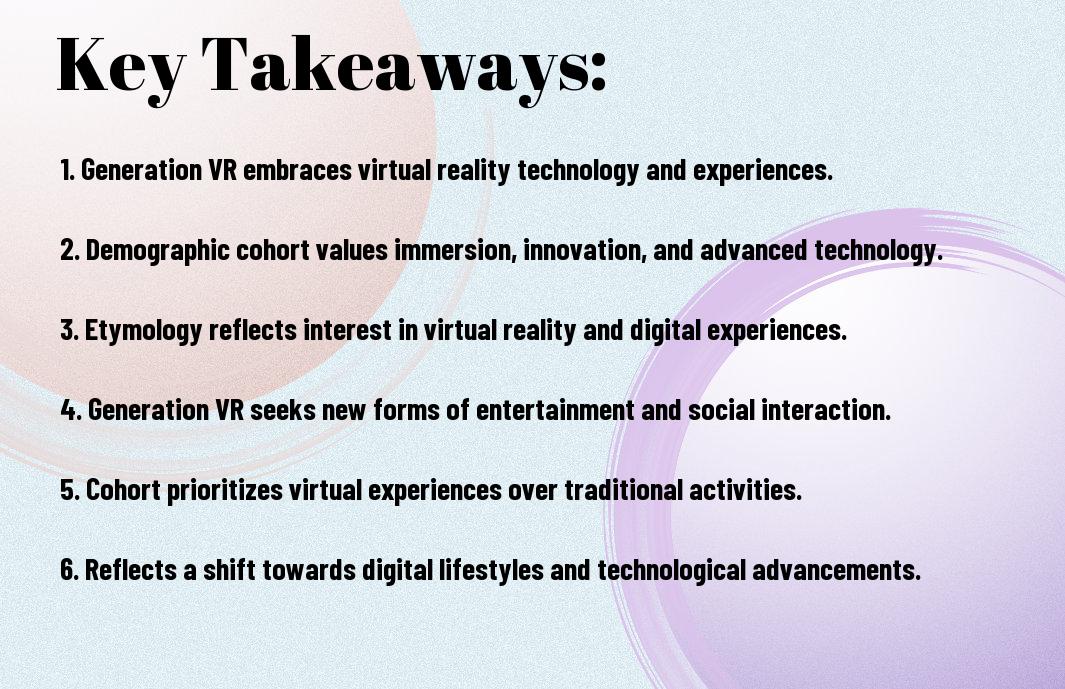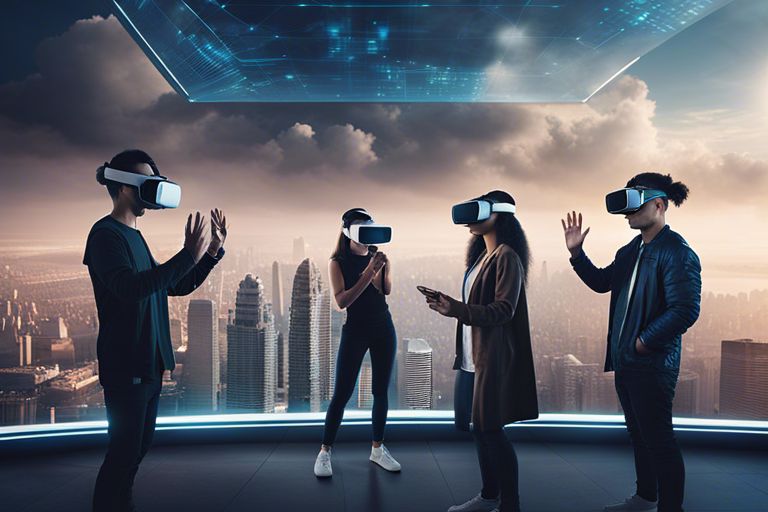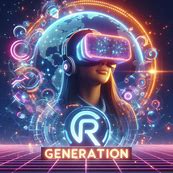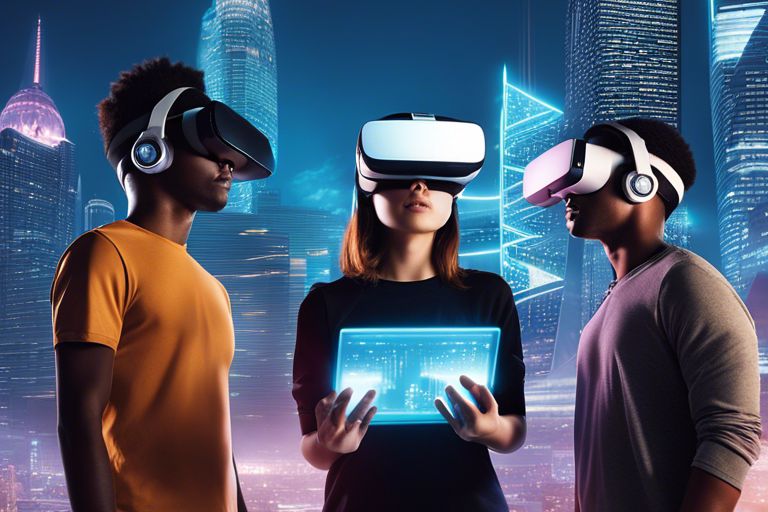With the rise of virtual reality technology, a new term has emerged to describe the generation growing up in this digital era – Generation VR. This ethymology carries significant insights into the demographic cohort it represents. Delving into the roots of this term exposes key characteristics, behaviors, and preferences of this group. Understanding the implications of ‘Generation VR’ sheds light on their unique relationship with technology, society, and the future.

Etymology of ‘Generation VR’
Obviously, the term ‘Generation VR’ is derived from the combination of ‘Generation’ referring to a group of individuals born and living around the same time, and ‘VR’ standing for Virtual Reality. When dissecting the etymology of this term, it uncovers insights into the unique characteristics and behaviors of the demographic cohort that it represents.
Historical Origins
Historically, the concept of generational cohorts dates back to the early 20th century when sociologists began categorizing groups of people based on their birth years and common experiences. Each generation is shaped by the events and technological advancements that occur during their formative years, influencing their values, beliefs, and attitudes.
Generation VR specifically refers to individuals who have grown up in a world where virtual reality technology has become increasingly prevalent and accessible. This group is distinguished by their comfort and fluency in navigating virtual environments, blurring the lines between the physical and digital worlds.
Evolution of the Term
For Generation VR, virtual reality is not just a tool for entertainment but a fundamental aspect of their daily lives. The term has evolved to encompass more than just the technology itself, reflecting a lifestyle characterized by digital experiences, social interactions, and even work environments that exist in virtual realms.
Evolution of the Term ‘Generation VR’ signifies the shifting landscape of how we engage with technology and each other, highlighting the transformative impact that virtual reality has on the behaviors and preferences of this demographic cohort.
Characteristics of ‘Generation VR’
While the term ‘Generation VR’ refers to individuals who have grown up surrounded by virtual reality technology, it is crucial to examine deeper into the characteristics that define this demographic cohort. Understanding their demographic parameters and technological proficiency is crucial in comprehending their unique perspectives and behaviors.
Demographic Parameters
Demographic parameters of ‘Generation VR’ encompass various factors such as age, education level, and geographical location. This demographic cohort typically consists of individuals born in the late 1990s to early 2010s, making them primarily millennials and Generation Z. They are digital natives who have been exposed to technology from a young age, shaping their worldview and interactions.
Moreover, ‘Generation VR’ is characterized by a diverse educational background, with a significant proportion pursuing degrees in science, technology, engineering, and mathematics (STEM) fields. Geographically, they are often concentrated in urban areas with access to high-speed internet and technological infrastructure, facilitating their immersion in virtual reality experiences.
Technological Proficiency and Usage
Technological proficiency among ‘Generation VR’ is notably high, as they effortlessly navigate digital environments and engage with immersive technologies. This cohort is proactive in adopting new tools and platforms, leveraging virtual reality for entertainment, education, and social interaction. Their comfort with technology enables them to embrace innovative solutions and adapt quickly to technological advancements.
Furthermore, the usage of virtual reality technology among ‘Generation VR’ extends beyond recreational activities to professional settings. They are early adopters of VR applications in various industries, including gaming, healthcare, and education, demonstrating a versatile approach to technology utilization.
Parameters such as technological proficiency and usage play a pivotal role in shaping the behaviors and preferences of ‘Generation VR.’ Their seamless integration of virtual reality into daily life signifies a paradigm shift in how technology is perceived and utilized, highlighting the transformative impact of immersive experiences on this demographic cohort.

Generation VR’s Place in Societal Evolution
For centuries, each new generation has played a significant role in the progression of society. The emergence of Generation VR marks a pivotal moment in the evolution of technology, culture, and economy. Understanding their place in societal evolution is imperative to grasp the implications they will have on the world.
Comparison with Previous Generations
On one hand, Generation VR shares some similarities with previous generations, such as their desire for connection, self-expression, and a better quality of life. However, their immersion in virtual reality sets them apart from their predecessors in profound ways.
| Previous Generations | Generation VR |
|---|---|
| Technology as a tool | Technology as an extension of self |
| Passive consumption | Active creation |
Impact on Culture and Economy
The Generation VR cohort is poised to revolutionize both culture and economy. The immersive nature of virtual reality experiences is reshaping the way we consume entertainment, socialize, and even work. This shift is creating new opportunities and challenges that must be navigated accordingly.
The impact of Generation VR on culture and economy is multifaceted. From creating new forms of art and entertainment to transforming the way businesses operate, their influence is undeniable. Companies are now adapting to cater to the virtual preferences of this generation, while policymakers are grappling with the ethical implications of a digitally immersed society.
Implications for the Future
All the research and analysis of the etymology of ‘Generation VR’ point towards a cohort that is deeply rooted in technology and virtual experiences. This generation is likely to shape the future in ways we cannot yet imagine.
Predicting Behavioral Trends
One of the key behavioral trends that can be predicted for ‘Generation VR’ is a strong preference for virtual interactions over physical ones. This cohort is likely to prioritize digital communication and relationships, leading to a shift in how social interactions and connections are formed and maintained. Additionally, ‘Generation VR’ may exhibit a higher tolerance for virtual reality experiences, blurring the lines between the real world and the digital realm.
Another behavioral trend to anticipate is an increased reliance on technology for various aspects of life, including work, education, and entertainment. ‘Generation VR’ is likely to embrace innovation and automation, paving the way for a more tech-savvy and digitally integrated society in the future.
Potential Challenges and Opportunities
For ‘Generation VR’, the potential challenges and opportunities lie in navigating the balance between virtual and physical realities. While the immersive nature of virtual reality offers exciting possibilities, it also raises concerns about issues such as addiction, privacy, and mental health.
Future advancements in virtual reality technology may present opportunities for ‘Generation VR’ to create new forms of expression, communication, and collaboration. However, it will be vital to address the challenges that come with these advancements to ensure a sustainable and ethical integration of virtual reality into society.
To wrap up
Ultimately, the ethymology of ‘Generation VR’ unveils a cohort of individuals deeply influenced by virtual reality technology. This demographic group, characterized by their familiarity and comfort with immersive digital experiences, showcases a profound integration of technology into their daily lives. As this generation continues to shape the future of society, businesses and institutions will need to adapt to their unique preferences and expectations, paving the way for innovative advancements in virtual reality and beyond.





